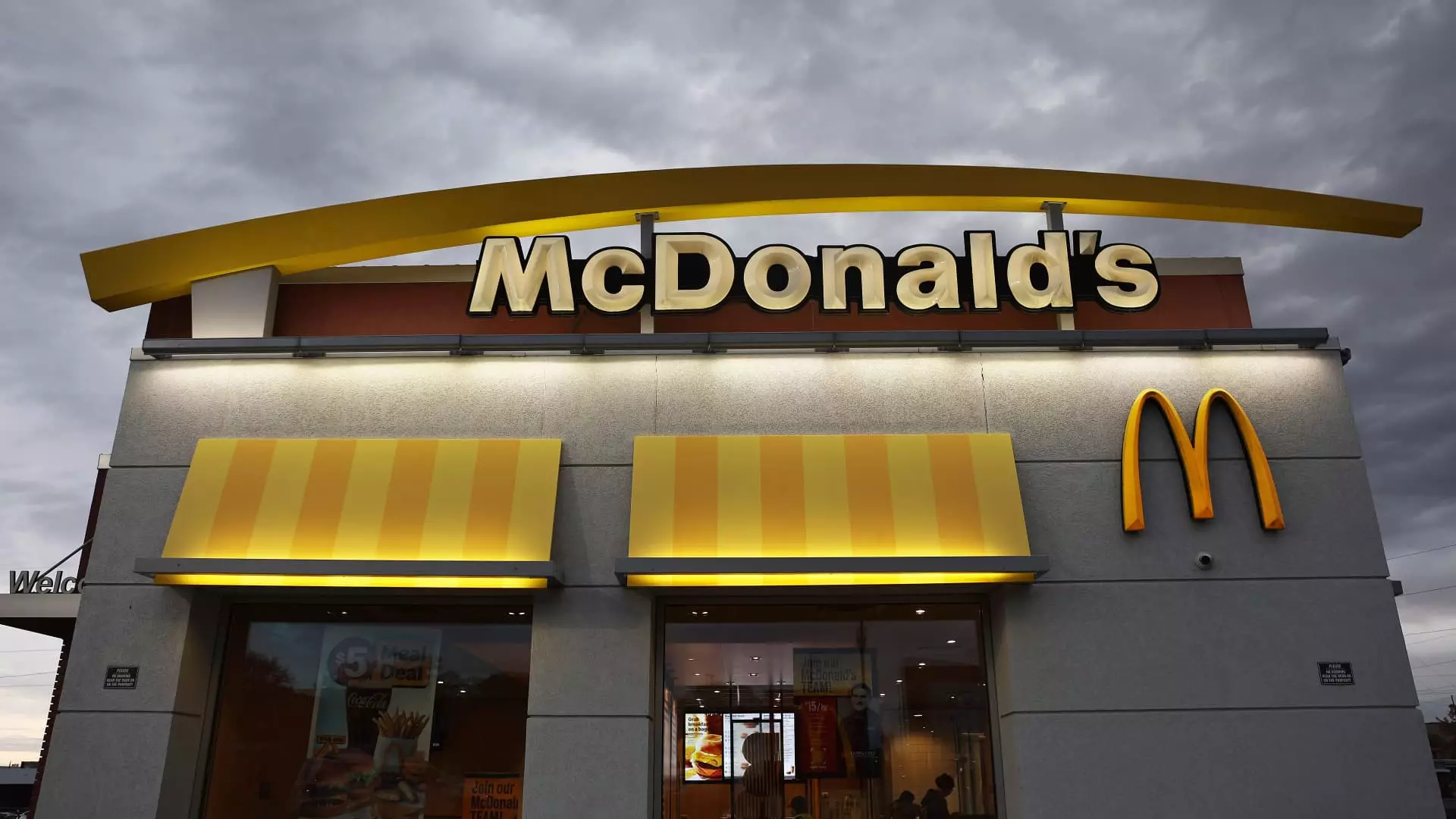McDonald’s recent quarterly earnings announcement has stirred various conversations in financial and culinary circles alike. Despite posting earnings per share that matched market expectations, the fast-food giant’s revenue fell short, unveiling cracks in its U.S. operations. A combination of external challenges—specifically an E. coli outbreak—and evolving consumer behavior paints a complex picture of McDonald’s current standing in the market. This article delves into McDonald’s quarterly performance, analyzing the underlying factors that impacted sales and exploring potential paths forward.
In the latest earnings report, McDonald’s disclosed an adjusted earnings per share (EPS) figure of $2.83, aligning with analyst forecasts. The overall revenue, however, came in at $6.39 billion, slightly below the anticipated $6.44 billion. This divergence highlights an ongoing issue for the company: despite stable profitability metrics, revenue generation remains a concern. The reported net income of $2.02 billion reflects a minimal decline compared to the previous year’s earnings, indicating a stagnation rather than a robust growth trajectory.
McDonald’s same-store sales growth of 0.4% did outpace analysts’ predictions of a 1% decrease, yet the real concern lies within the U.S. market. A drop of 1.4% in domestic same-store sales starkly contrasts with projections that anticipated a gentler decline of 0.6%. While McDonald’s has a storied history of resilience, the unexpected downturn raises questions about its future strategies.
The E. coli outbreak linked to its Quarter Pounder burgers served as a detrimental blow to McDonald’s U.S. sales, affecting customer perceptions and foot traffic. The Centers for Disease Control and Prevention’s involvement and subsequent announcement attributing illness cases to the fast-food giant’s product brought immediate repercussions. Although the company acted swiftly by changing suppliers for its slivered onions—a move aimed at regaining consumer trust—the damage to its reputation and sales had already begun.
In the aftermath of the outbreak’s announcement, McDonald’s experienced a rapid decline in customer visits, particularly within the most affected states, highlighting how public health concerns can swiftly translate into financial repercussions for food service establishments.
Amidst these challenges, McDonald’s attempted to revitalize its appeal through a $5 combo meal initiative, designed to attract cost-sensitive customers. This strategy did yield a favorable uptick in same-store sales during a prior quarter. However, analysts caution that while value meals have their merits, they often succeed only if they encourage additional purchases from the regular menu. The effectiveness of promotional strategies hinges not just on price points but also consumer willingness to invest in higher-margin items.
The patterns within consumer spending reveal a more complex narrative. Although customer traffic maintained a slight uptick, the decrease in average expenditure indicates a shift in priorities, with patrons perhaps favoring value over variety during challenging economic circumstances.
The good news for McDonald’s comes from its international segments, which demonstrated stronger sales performance. The company’s international developmental licensed markets, including regions like the Middle East and Japan, reported a commendable same-store sales growth of 4.1%. This reflects a robust demand for McDonald’s offerings outside the United States, underscoring the potential for expansion and adaptation in diverse markets.
Moreover, even within McDonald’s primary international operated markets, there was a slight growth of 0.1%. Such performance suggests that even in the face of adversity in one of its largest markets, the brand maintains considerable global strength. However, challenges persist in specific countries, including the U.K., where certain market strains have led to declines in sales, hinting at the necessity for localized strategies.
McDonald’s current quarterly performance encapsulates both challenges and avenues for growth. The U.S. market’s response to health-related incidents and evolving consumer preferences underscores the need for adaptive strategies that address both quality and value. Meanwhile, the resonating strength of its international segments indicates that McDonald’s has opportunities to pivot and flourish outside its domestic borders.
As the fast-food landscape continues to evolve, the pressure remains on McDonald’s to innovate its menu, revamp marketing tactics, and enhance customer experiences to retain and grow its audience. The road ahead may be fraught with complexities, but the brand’s robust global presence suggests that with strategic planning and responsiveness, McDonald’s can navigate these turbulent waters effectively.


Leave a Reply